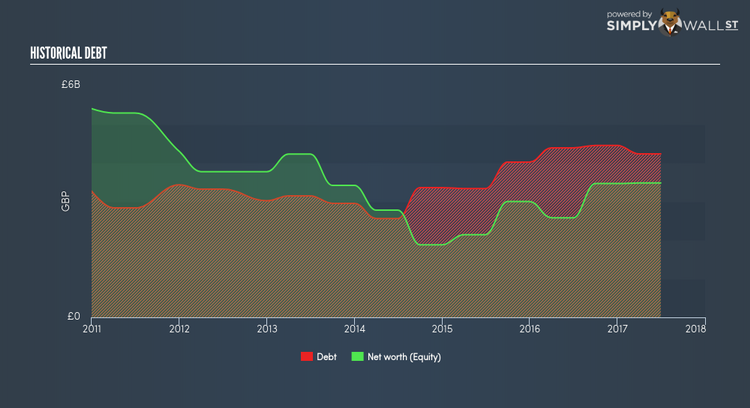What is Behind BAE Systems plc’s (LSE:BA) Superior ROE?

With an ROE of 35.63%, BAE Systems plc (LSE:BA.) outpaced its own industry which delivered a less exciting 12.45% over the past year. On the surface, this looks fantastic since we know that BA. has made large profits from little equity capital; however, ROE doesn’t tell us if management have borrowed heavily to make this happen. Today, we’ll take a closer look at some factors like financial leverage to see how sustainable BA.’s ROE is. See our latest analysis for BA.
Breaking down ROE — the mother of all ratios
Return on Equity (ROE) is a measure of BA.’s profit relative to its shareholders’ equity. It essentially shows how much BA. can generate in earnings given the amount of equity it has raised. While a higher ROE is preferred in most cases, there are several other factors we should consider before drawing any conclusions.
Return on Equity = Net Profit ÷ Shareholders Equity
ROE is assessed against cost of equity, which is measured using the Capital Asset Pricing Model (CAPM) – but let’s not dive into the details of that today. For now, let’s just look at the cost of equity number for BA., which is 8.30%. Given a positive discrepancy of 27.34% between return and cost, this indicates that BA. pays less for its capital than what it generates in return, which is a sign of capital efficiency. ROE can be split up into three useful ratios: net profit margin, asset turnover, and financial leverage. This is called the Dupont Formula:
Dupont Formula
ROE = profit margin × asset turnover × financial leverage
ROE = (annual net profit ÷ sales) × (sales ÷ assets) × (assets ÷ shareholders’ equity)
ROE = annual net profit ÷ shareholders’ equity
The first component is profit margin, which measures how much of sales is retained after the company pays for all its expenses. Asset turnover reveals how much revenue can be generated from BA.’s asset base. And finally, financial leverage is simply how much of assets are funded by equity, which exhibits how sustainable BA.’s capital structure is. Since ROE can be artificially increased through excessive borrowing, we should check BA.’s historic debt-to-equity ratio. At 121.70%, BA.’s debt-to-equity ratio appears balanced and indicates the above-average ROE is generated from its capacity to increase profit without a large debt burden.
What this means for you:
Are you a shareholder? BA.’s above-industry ROE is encouraging, and is also in excess of its cost of equity. Since its high ROE is not likely driven by high debt, it might be a good time to top up on your current holdings if your fundamental research reaffirms this analysis. If you’re looking for new ideas for high-returning stocks, you should take a look at our free platform to see the list of stocks with Return on Equity over 20%.
Are you a potential investor? If you are considering investing in BA., basing your decision on ROE alone is certainly not sufficient. I recommend you do additional fundamental analysis by looking through our most recent infographic report on BAE Systems to help you make a more informed investment decision.
To help readers see pass the short term volatility of the financial market, we aim to bring you a long-term focused research analysis purely driven by fundamental data. Note that our analysis does not factor in the latest price sensitive company announcements.
The author is an independent contributor and at the time of publication had no position in the stocks mentioned.


